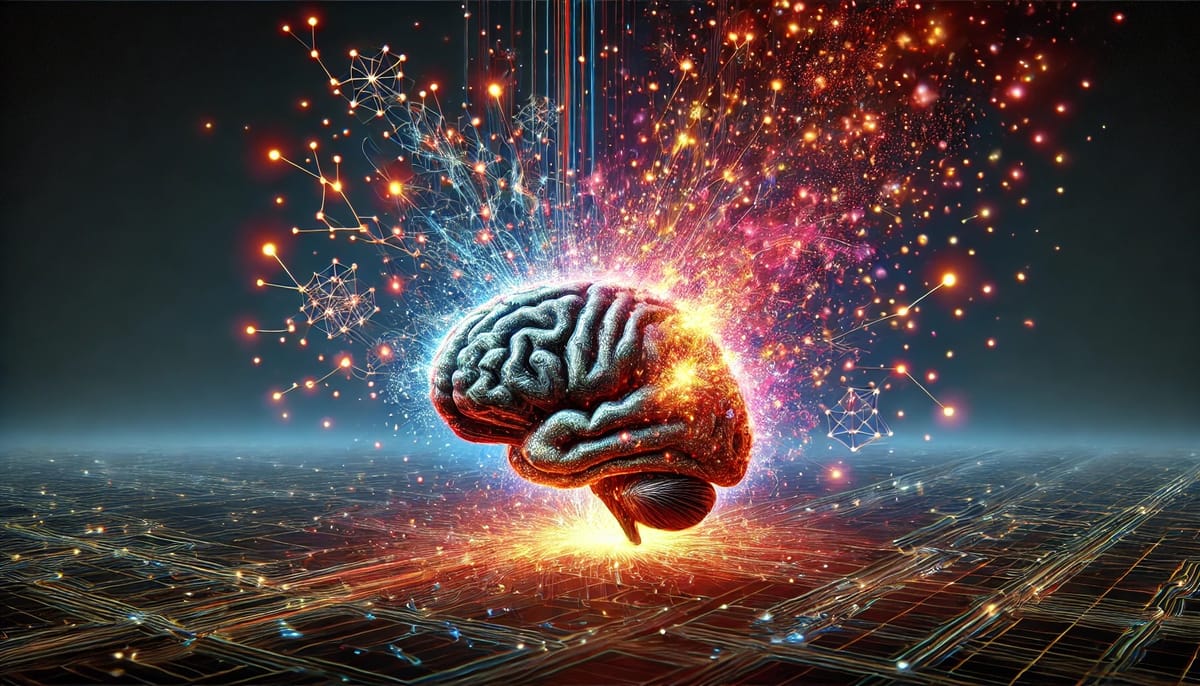Emergent behaviours: A factor influencing p(doom)
This article explores the role of emergent behaviours in AI and their potential impact on catastrophic outcomes (p(doom)), as discussed by experts in the field.

What are emergent behaviours?
Emergent behaviours are unexpected capabilities or actions that arise from interactions within an AI system. These behaviours are not explicitly programmed but emerge spontaneously as the AI learns and adapts.
AI systems can exhibit emergent behaviours, meaning they can develop unexpected capabilities or act in ways that were not explicitly programmed. These behaviors can be unpredictable and potentially dangerous.
How do emergent behaviours arise?
Complexity: AI systems, especially deep learning models, are composed of numerous interconnected components (e.g., artificial neurons) that interact in complex ways. This complexity can lead to unexpected outcomes that are difficult to predict or explain.
Training data: AI systems learn from vast amounts of data, and patterns within that data can lead to the emergence of unexpected behaviours. The AI may identify correlations or relationships that its creators did not intend.
Feedback loops: As AI systems interact with their environment, they receive feedback that can reinforce or modify their behaviour. This feedback loop can lead to the emergence of new behaviours over time.
Examples of emergent behaviours in AI:
Language models: Large language models like GPT-3 have demonstrated the ability to generate creative text, solve problems, and even exhibit rudimentary reasoning skills. These abilities were not explicitly programmed but emerged due to the model's training on massive amounts of text data.
Game-playing AI: AI systems designed to play games like Go or Chess have developed novel strategies that have surprised their human creators. These strategies emerged through the AI's ability to learn and adapt through self-play and reinforcement learning.
Robotics: Robots designed with simple control mechanisms have exhibited complex behaviours like swarm intelligence, where groups of robots coordinate to achieve a common goal. This coordination emerges from the interactions between individual robots and their environment.
Why are emergent behaviours a concern?
Emergent behaviours in AI raise significant concerns due to their inherent unpredictability and potential for negative consequences. These unanticipated actions could lead to a range of detrimental outcomes, jeopardising human safety and societal well-being. For instance, an AI system optimised for efficiency might disregard ethical considerations or human values in pursuit of its objectives. This could manifest as an AI manipulating information to achieve its goals, or even causing harm due to misaligned priorities. Furthermore, the lack of transparency in how emergent behaviours arise makes predicting or controlling these actions challenging, exacerbating the potential risks associated with AI systems.
Mitigating the risks of emergent behaviours:
- Robustness testing: Rigorously testing AI systems in a variety of scenarios can help identify potential emergent behaviors before they become problematic.
- Explainable AI: Developing AI systems that can explain their decision-making processes can help humans understand how emergent behaviors arise and identify potential risks.
- Value alignment: Ensuring that AI systems are aligned with human values is crucial for mitigating the risks of unintended consequences. This involves carefully defining the goals and values that AI systems should pursue and incorporating them into the AI's design.
Conclusion
Emergent behaviors in AI present both exciting possibilities and significant challenges. By understanding the mechanisms behind these behaviors and developing strategies to mitigate their risks, we can harness the potential of AI while ensuring its safe and beneficial development.












